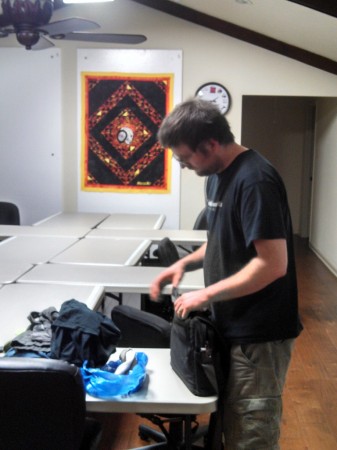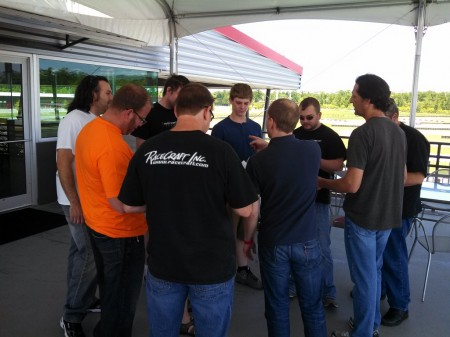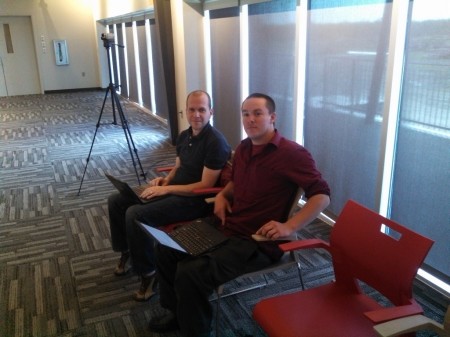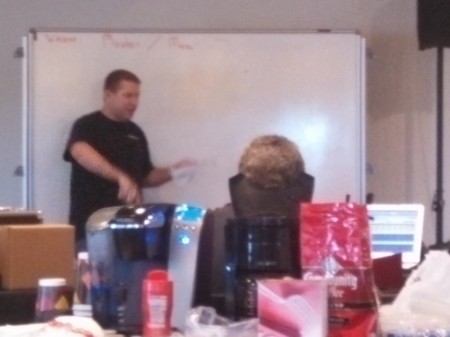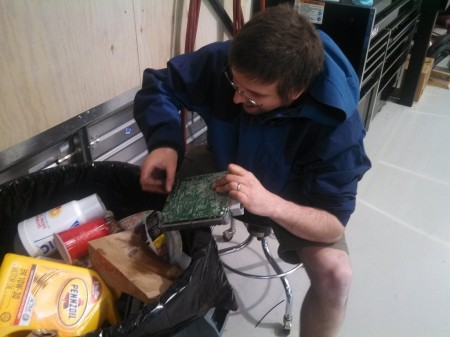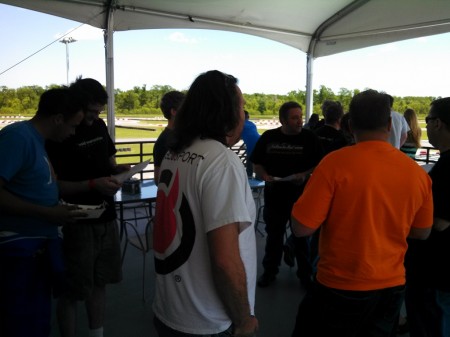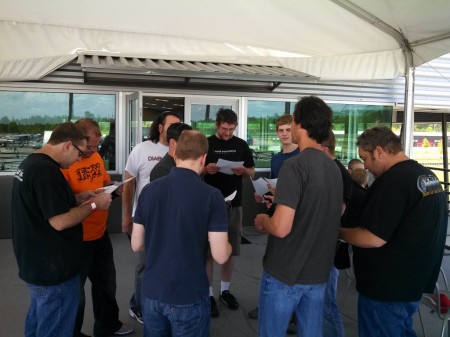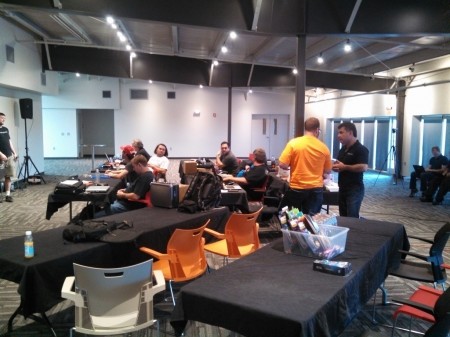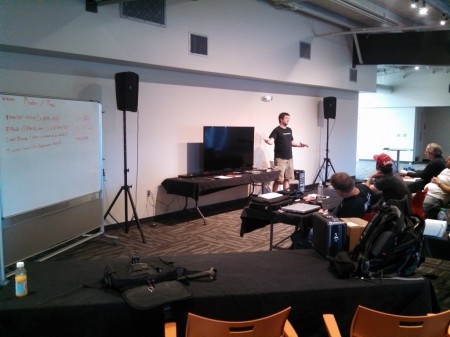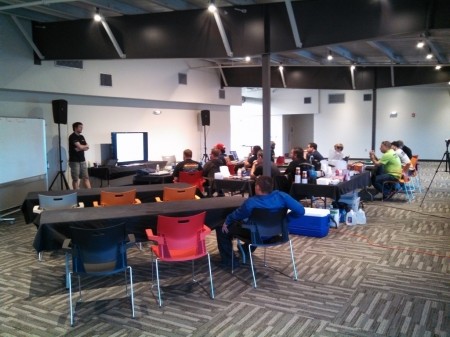Another Fall Class!
We are going to be offering a three-day class on tuning Fords with QuarterHorse in Fall 2014 – September 26th. This is the same format class previously offered. Street tuning and dyno instruction will take place on a dyno in the Fairfield, OH (northwest suburb of Cincinnati).
Cost
Registration for the class will be $350. You can pay with any of the methods that we accept on the website (Paypal, Credit Card) in advance or pay cash/money order at the door. If you’re going to pay at the door, we ask that you purchase the class item from our website and select “Check or Money order” at checkout so we can keep an accurate headcount and reserve your spot. All of the products that are used for the class will be available for purchase at/after the event at a discount for attendees. You can register for the event here.
Class Overview
Dave Blundell, Moates tech support and former tuner at Modular Depot will be the instructor.
Registration will be limited to 15 people in order to keep the class manageable and give everyone a chance to get involved and ask questions. There will be a mixture of classroom instruction, live in-car demonstration of logging techniques with street driving and dyno tuning and techniques. Forced induction and naturally aspirated modifications and tuning will be covered. We expect lots of discussion and have built time for this into the class schedule.
Primary focus will be on 89-95 (i.e. Fox-body Mustang, 94-95 Mustang) EEC-IV MAF Fords but much of the material will carry to later models also supported by the same hardware and software. This class is aimed at beginner-intermediate users, but those with literally no experience at all may want to look at some of the material in advance in order to be better prepared. Likewise, if you have years of experience with Ford EFI tuning and you’re simply looking to get familiar with using our products for the EEC-IV platform, you should already be familiar with some of the material presented. We cover everything from physical engine operation to air metering methods to Ford implementations with a goal of helping you make targeted tuning changes and not just “button mashing.”
Schedule of Events
Day 1 (TBA) will focus on general theory of how engines work, how electronic engine management works and general approaches to calibration of engine management systems. Chances are, if you’ve been tuning cars for five years you probably already know a lot of this stuff but it probably wouldn’t hurt you to sit through it again. If you’re new to engine management, expect your brain to hurt. The goal of day one is to help you understand how the many pieces of engines, electronics and sensors that you will be dealing with fit together – the big picture. Most of this day will NOT deal with Ford specific terms and methods. At the end of the day, you should have a strong understanding of spark ignition internal combustion engines, how and why engines make power, be able to name and explain the function of sensors likely to be found on a fuel injected engine and understand the conditions needed for achieving specific goals such as fuel economy, power or keeping and engine in one piece. If you’ve previously worked with other systems of engine management, you might look at what you already know in a new light.
Day 2 (TBA) will focus on early Ford engine management. If you need to get any software set up and configured, we’ll take care of it on this day. The morning session will focus on Ford specific terms and procedures for running an engine. The emphasis will be on the most common and important parameters necessary for adjustment. Fuel, spark, idle and limits will be covered as well as some of the limitations and pitfalls of using factory computers. Both forced induction and naturally aspirated setups will be discussed. After lunch, we will demonstrate setting up Moates hardware and how TunerPro RT and Binary Editor 2012 software can be used to make adjustments necessary for tuning Ford vehicles. At the end of day two, you will have an understanding of the terms used in Ford EFI, be able to pick out the most important items that you need to change in a calibration when tuning and see how software can be used with Moates tools to tune vehicles. GUFB (aka 89-93 MAF Fox Body Mustangs) and CBAZA (aka 94-95 Mustangs) will be the focus of this day.
Day 3 (TBA) will focus on hands-on usage of TPRT and BE, acquiring data from street and dyno use, analyzing it, diagnosing issues and making changes to tune your vehicle. We will be acquiring data on the street and on the dyno and using it to make targeted changes. This will be putting the theory from previous days together with real vehicles and seeing how to apply our understanding of Ford MAF systems to achieve results. At the end of day three, you will be able to understand enough of Ford EFI systems and the software available to work with Moates tools to be able to acquire data and make precise changes based on measurements rather than simply “mashing buttons” to get results.
Plan on 8-10 hours of being focused per day. We’ll typically run on a 9ish-6ish kind of day depending on how things go. (Local time is Eastern Standard Time – EST)
There will be lunch, snacks and drinks provided. At previous classes, we had an optional group dinner afterwards that worked out well. Some of the best discussion ended up coming up over dinner, so we’ll probably try to do that again.
We’ll try to have a good chunk of the curriculum up here on the support site prior to the class for you to review and prepare.
Travel Information
The dyno portion of the class will be held at Zerolift Autolab, 100 Security Dr, Fairfield, OH 45014
The classroom portion will be held TBA, either at Zerolift or a nearby hotel.
Suggested Hotel information will be updated at a later date.
The location is approximately 45 minutes drive from Cincinnati/NKY airport (CVG) and approximately an hour from Dayton International Airport.
Other Class Opportunities
Check out the support site for other opportunities to take a class on using Moates products.
